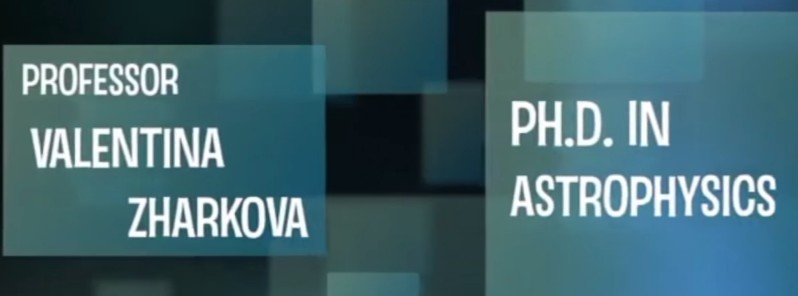Study suggests Modern grand solar minimum in 2020 – 2053

Theoretical astrophysicist Valentina Zharkova, lead author of the study that reproduced the summary curve of solar activity for the last 3 000 years and predicted Modern grand minimum in 2020 – 2055, recently spoke with Jake and Mari of The Grand Solar Minimum YouTube channel, explaining what she and her fellow scientists learned while studying our star. Zharkova holds a BSc/MSc in Applied Mathematics and Astronomy & a Ph.D. in Astrophysics.
While Zharkova is well-accepted scientists who discovered sunquakes and published several papers in Nature, her research that suggests the Sun may soon enter a period of significantly reduced activity received quite a lot of attacks.
However, Zharkova says the facts were right in front of them and that she is quite confident in their results. "In 5 – 10 years we are gonna see who is right," she said. "I'm quite confident what we've done is correct."
The reduced solar activity could possibly cause a mini ice age similar to the Maunder Minimum in just 15 years from now. Their forecasting model has shown to have a 97% accuracy when mapping the past movements of sunspots, using data of solar cycles.
The interview is short and sweet and presents key findings from the study 'without fear mongering and mean spirited remarks toward the warming crowd.' This is what science should be about…
Reference:
"Reinforcing the double dynamo model with solar-terrestrial activity in the past three millennia" – Valentina V. Zharkova et al. – https://arxiv.org/pdf/1705.04482.pdf
Abstract
Using a summary curve of two eigen vectors of solar magnetic field oscillations derived with Principal Components Analysis (PCA) from synoptic maps for solar cycles 21-24 as a proxy of solar activity, we extrapolate this curve backwards three millennia revealing 9 grand cycles lasting 350-400 years each. The summary curve shows a remarkable resemblance to the past sunspot and terrestrial activity: grand minima – Maunder Minimum (1645-1715 AD), Wolf minimum (1280-1350 AD), Oort minimum (1010-1050 AD) and Homer minimum (800-900 BC); grand maxima – modern warm period (1990-2015), medieval warm period (900-1200 AD), Roman warm period (400-10 BC) and others.
We verify the extrapolated activity curve by the pre-telescope observations of large sunspots with naked eye, by comparing the observed and simulated butterfly diagrams for Maunder Minimum (MM), by a maximum of the terrestrial temperature and extremely intense terrestrial auroras seen in the past grand cycle occurred in 14-16 centuries. We confirm the occurrence of upcoming Modern grand minimum in 2020-2053, which will have a shorter duration (3 cycles) and, thus, higher solar activity compared to MM. We argue that Sporer minimum (1450-1550) derived from the increased abundances of isotopes 14C and 10Be is likely produced by a strong increase of the terrestrial background radiation caused by the galactic cosmic rays of powerful supernovae.
Featured image credit: GSM

can there be a connection between solar minimum and the rise of pandemic infectious diseases? Specific UV bands kill viruses and if those are reduced during minimum pandemics will occur.
I don’t know about length, but from what I can tell using the meager data from yore as a yardstick, we could be in for a shock during the coming solar cycle. Sunspot activity has fallen off ……….. well, the sun I guess. Planet won’t fit this time. The only problem I have committing thoroughly to my assertion, is due to the lack of good observation equipment in the Little Ice Age. But the current rate, or lack of sunspot activity certainly looks to surpass what was experienced during that era. We’re going to have to wait and see what develops, but at least we should compile a complete record this time.
I believe the Sun will remain in grand minimum for a longer period of time than what predicted by theoretical astrophysicist Valentina Zharkova. However, occasionally the Sun will produce very intense events that will last only for a short period of time. You can read the reason why I believe that will be the case in my upcoming research article, OUR STAR IS ROTATING AROUND THE GALACTIC CORE ON A HELICAL ORBIT WHILE SPIRALING UP AND DOWN (SPIRAL OSCILLATION)
I believe the Sun will remain in grand minimum for a longer period of time than what predicted by theoretical astrophysicist Valentina Zharkova. However, occasionally the Sun will produce very intense events that will last only for a short period of time. You can read the reason why I believe that will be the case in my upcoming resaerch article, OUR STAR IS ROTATING AROUND THE GALACTIC CORE ON A HELICAL ORBIT WHILE SPIRALING UP AND DOWN (SPIRAL OSCILLATION)
Jamal, based on your research would you say that during solar minimum (all) that even though the solar flares are fewer, some of the biggest ones (most powerful) occur?